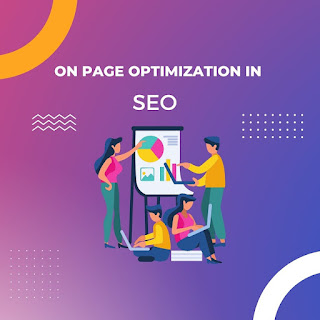It ensures that your website is of high quality, relevant, and trustworthy. High-quality content has generally been a priority for Google. It aims to ensure that sites that provide high-quality content are rewarded with higher ranks, while low-quality content websites are less visibility.
Factors to be considered in On-Page Optimization
URL: URL address that is connected to the article to provide search engine indications about the webpage content and make the crawling process easier.
Head Section
The title and meta tags are found in the head section of an HTML page. Meta tags are descriptions within title tags that assist search engine crawlers to understand your website. H1 or H2 tags may be used as titles if a title is not provided or if a specified title is not recognized by the search engine. The following factors must be considered while optimizing the title tag:-
- To create a relevant title, try to include the focusing keywords.
- Add an interesting title
- Avoid spelling or grammatical errors
- For an SEO title, don't go above 512 pixels. The next section of a title will be displayed as dots if the title exceeds this limit.
- Try to give your website a unique title to avoid title duplication. Google Search Console may discover a duplicate title problem and display an error
- Titles that are less than three words should be avoided and provide a relevant title related to the body of content
- The title length limit shouldn't exceed 55 to 60 characters
Meta description
It is the website description that appears in an organic search result snippet. It offers the user a quick overview of the website's content. If a website's impressions are good but its ranking isn't improving, a change in the meta description can usually help. The following considerations should be kept in mind when optimizing meta descriptions:
The maximum length for a web page is between 155 and 160 characters, however, the maximum length for blogs or articles is 150 characters. This is because the meta description will include the blog or article's publication date.
- Try not to go above the 1024 pixel width restriction.
- Make sure you don't make any grammatical or spelling mistakes.
- Give a brief summary of the web page or website.
- It must be appealing in order to boost the number of visitors to the website.
By providing a unique short, you may avoid meta description duplication. Even the content of the body may be used to create a unique and appropriate description.
Eg: <meta name= "description" content="brief in the snippet"/>
Keyword Meta tags: Including keywords in the meta tags allows the search engine crawler to properly identify and analyse the website. Although Google no longer uses keywords as a ranking factor for websites, proper keyword usage may be beneficial.
<meta name="keywords" content="seo company, seo services, seo firm/>
Meta tags for robots: This meta tag is used to provide instructions to web crawlers or bots. This aids in the establishment of webpage priorities, such as privacy policies.
<meta name="robots" content="index, follow/> to index a page and follow the hyperlink
Body Section
Header tags The main material of a webpage is contained in this section of an HTML page. It comprises header tags like as H1>, H2>, and H3>.In a webpage, there should be one h1 and h2. Also, make the keyword that we targeted on h1. When more than one h1 tag is used, the bot becomes confused and sends it to the sandbox, a temporary storage location. As a result, the page appears in the search results, but its position remains unchanged. Ensure the header tags you're using are appropriate for the information you publish.
Content Optimization The contents of header tags should be related to the headings. It is necessary to incorporate high-quality content. It should be simple and clear, and you should attempt to avoid using long phrases, as this lowers the reading ease score. It's a good idea to use keywords at the start of a paragraph or a phrase. It will readily pique the interest of both Google and the user. Because the page is relevant to the search query, both will locate it.
If Google believes the meta description to be insufficient, it will replace it with the page's relevant content.
The frequency of keywords in relation to the overall number of words on our web page is referred to as keyword density. However, according to Google, keyword density isn't a factor in ranking. However, they claim that having a few instances of focused keywords in our publication document is a bonus.
Image Optimization Including images in your content is a great way to brighten up our website. The image is mostly made up of src and alt. The alternate text in an image is called alt, while the source path is referred to as src. The alt name should be descriptive and relevant to the image. The alt name is primarily used for crawling. In addition, the file name for the image should be descriptive and relevant to the image. Words separated by hyphens or underscores should be used.
The image tag's code is: <img src="img_book.jpg" alt="Book"/>
Link Optimization It refers to the process of connecting one page of our website to another. It provides us with a great opportunity to develop our website. The contents of our publication page are crawled using anchor text as fuel or catalyst. The usage of anchor text is really beneficial since it drives traffic to our pages. However, as consumption increases, equity is passed forward, as well as confusion. Internal connections will not be given equity.
The anchor tag's code is: <a href="https://www.seo.com">Visit seo.com! </a>
Are you looking for affordable Freelance SEO in Kochi for your website?





.jpg)

0 Comments